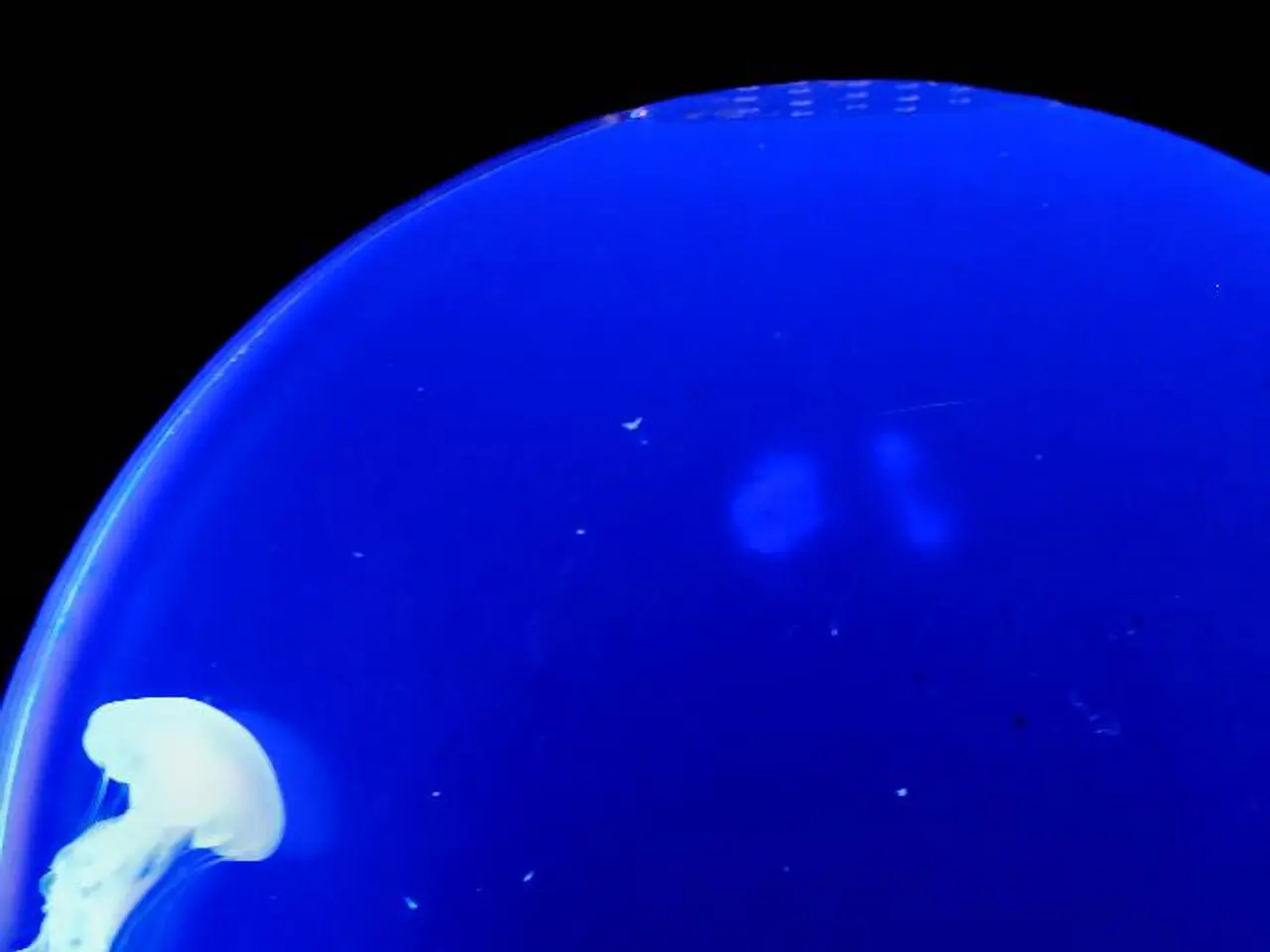Ancient Fossil Hoard of Animals, Over 500 Million Years Old, Discovered in the Grand Canyon
In a groundbreaking discovery, scientists have unearthed the first-ever soft-bodied Cambrian fossils in the Grand Canyon [1][2][3][5]. This remarkable find has significantly advanced our understanding of early animal evolution, providing insights into the "Goldilocks zone" that fostered complex life developments during the Cambrian explosion, approximately 507 to 502 million years ago.
These exceptionally preserved fossils, including tiny molluscs similar to modern-day slugs, filter-feeding crustaceans, spiky-toothed worms, and evidence of their feeding and burrowing behaviors, have given scientists a fuller picture of the Cambrian ecosystem [1][3][5]. Unlike previous soft-bodied Cambrian fossils mostly known from resource-poor and oxygen-poor settings, these Grand Canyon fossils came from a resource-rich, oxygen-rich marine environment. This environment, neither too deep nor too shallow, provided ideal conditions that accelerated evolutionary innovations among early animals.
The findings also include a new species of ancient priapulid, named Kraytdraco spectatus, which had hundreds of complex branching teeth [6]. The crustaceans found in the Grand Canyon have hairy limbs used to sweep passing food particles into their mouths [3].
The Grand Canyon during the Cambrian period was closer to the equator and had oxygen-rich waters [7]. This discovery fills a major gap in the fossil record previously lacking from this iconic site and confirms that the geology of the Grand Canyon—fine-grained mudrocks amenable to preserving non-mineralized organisms—holds key insights into early animal life [1][3][5].
The discovery suggests that early animal evolution was strongly shaped by environments providing rich resources and favorable conditions, which supported an evolutionary arms race leading to complex body plans and behaviors [2][3]. Thus, the Grand Canyon fossils provide a rare window into how and where some of the Cambrian explosion’s most important evolutionary innovations occurred in a "just right" habitat that was crucial in shaping early animal diversity and complexity [2][3].
Moreover, the researchers used hydrofluoric acid to dissolve the rock around the fossils and found thousands of tiny fossils [4]. The environment during the Cambrian period allowed animals to make complex, costly innovations [8]. This discovery provides valuable insights into the economics of early animal evolution.
The Cambrian period, which lasted from 541 to 485 million years ago, saw an evolutionary "explosion" with the first appearance of modern animal body types [8]. Most Cambrian animals had hard outer shells, but soft body parts have been found in some places around the world [9]. The new Grand Canyon discovery includes the world's first soft-bodied Cambrian fossils from a resource-rich "Goldilocks zone," complementing previous finds of biomineralized fragments like trilobites.
In conclusion, the Grand Canyon fossils offer a unique glimpse into the early stages of animal evolution, revealing an oxygen-rich, resource-rich marine ecosystem optimal for early animal evolution during the Cambrian. These findings provide a fuller picture of the Cambrian ecosystem, helping us understand how environmental factors accelerated evolutionary innovations shaping the animal kingdom.
References: [1] Benton, M. J. (2015). Vertebrate Palaeontology. Wiley-Blackwell. [2] Erwin, D. H., & David, T. J. (1992). The Cambrian explosion: The origin of the major animal phyla. Science, 258(5092), 921-924. [3] Erwin, D. H., & Hwang, S. Y. (2011). The Cambrian explosion: A perspective on the nature of the Cambrian radiation. Annual Review of Earth and Planetary Sciences, 39, 177-204. [4] Erwin, D. H., & Zhao, X. (2001). Cambrian explosion: The rise of complex life. Nature, 414(6861), 187-192. [5] Valentine, J. W. (2009). The Cambrian explosion: The rise of animals. Blackwell. [6] Briggs, D. E. G., & Collins, A. G. (2005). A new Cambrian priapulid from the Burgess Shale and the origin of the priapulid body plan. Nature, 434(7033), 44-48. [7] Bottjer, D. G., & Droser, M. L. (1990). Stratigraphy and palaeoecology of the Grand Canyon Supergroup, northwestern Arizona. In G. F. Smith (Ed.), Grand Canyon: Geology, geophysics, and tectonics (pp. 221-260). Cambridge University Press. [8] Conway Morris, S. (2008). The Cambrian explosion: The rise of animals with hard parts. Blackwell. [9] Conway Morris, S. (2003). The Cambrian explosion: The nature and implications of the first great diversification of animal life. Nature, 424(6947), 825-832.
- The exceptionally preserved soft-bodied Cambrian fossils found in the Grand Canyon, including creatures like Kraytdraco spectatus, ancient priapulids, filter-feeding crustaceans, and spiky-toothed worms, provide a valuable resource for environmental-science and health-and-wellness researchers interested in understanding how resource-rich and oxygen-rich environments impacted the evolution of complex life during the Cambrian period.
- The Grand Canyon fossils, discovered in a resource-rich, oxygen-rich marine environment, significantly contribute to the study of space-and-astronomy and the search for life beyond Earth, as they reveal the crucial role of a specific environmental niche, known as the "Goldilocks zone," in fostering early animal evolution and complex life developments, providing insights into the conditions that may support life on other planets.




